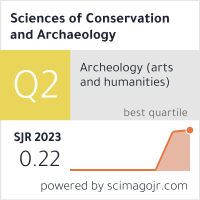The Creation of Rural Revitalization and Cultural Heritage Exhibition Developed from Case Studies
Keywords:
Creation of rural revitalization, Cultural Heritage Exhibition Developed, Case StudiesAbstract
The CPC Central Committee and State Council have announced plans to develop agriculture and rural areas, with Premier Li Keqiang promising vigorous implementation. This research aims to investigate and study the revitalization and inheritance modes of the ten rural cultures in China, and establish the modes of artistic rural revitalization and cultural inheritance. The research aims to study ten modes of rural cultural revitalization in China, focusing on artistic and cultural inheritance. It will be conducted from 2023 to 2024, examining various rural culture revitalization sites in China. The study will examine the protection and development of rural cultural resources, including material and intangible heritage, and the cultivation of local cultural talents. The research also highlights the importance of preserving and promoting these cultural resources for rural revitalization. The research aims to create a rural revitalization and cultural heritage exhibition using case studies from 30 rural communities. The Cultural Heritage Exhibition Activity Model (IOC) will be used as a data collection tool with a mixed-method approach to assess participants' satisfaction and develop exhibition formats. The research revealed that The Wengcheng Art Village revitalizes rural culture by incorporating artistic elements and natural landscapes, thereby attracting tourists and enhancing the artistic literacy of the villagers. Dingnan Village preserves Hakka language and customs, while the $200 million Wengcheng Agricultural Park Project connects administrative villages and promotes economic development. The Foshan Nanhai Land Art Festival combines art with life and tradition. The conclusion was that the cultural heritage exhibition model promotes traditional arts and local culture by integrating cultural resources with industries like art, tourism, and education. It addresses challenges like low utilization of abandoned spaces, infrastructure construction, and construction risks. It emphasizes community engagement, sustainability, and long-term benefits, encouraging collaboration among government, enterprises, and residents.




